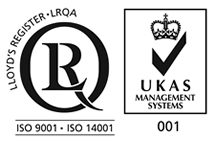
Main Products
Copyright 1998-2025 Firmetal Group All Rights Reserved. | Sitemap
A method for post-treatment of 3D printed metallic tantalum and high-temperature vacuum sintering to reduce oxygen content. This method utilizes ultra-high temperature heat treatment to lower the oxygen content of 3D printed products to below 300ppm or even 100ppm, thereby reducing the requirement for the oxygen content of 3D printed tantalum powder as raw material and significantly lowering the cost of 3D printing raw materials and products.
A method for post-treatment of 3D printed metallic tantalum and high-temperature vacuum sintering to reduce oxygen content, characterized in that the 3D printed tantalum product is removed from the printed substrate, the excess tantalum powder adhering to the 3D printed tantalum product is removed and dried, and the 3D printed tantalum product is placed in a heat treatment vacuum furnace. The heat treatment process of multi-stage temperature rise and holding at 1500-2600℃, the number of stages of temperature rise and holding is 1 to any number of stages, and the holding time in each stage of temperature rise and holding is 5-450 minutes. After the last stage of high-temperature vacuum sintering heat treatment of temperature rise and holding is completed, the power is cut off and the temperature is reduced to less than 50℃, and then the vacuuming is stopped. Open the furnace and remove the 3D printed implant.
During the entire high-temperature vacuum sintering heat treatment process, the vacuum degree of the high-temperature vacuum sintering heat treatment vacuum furnace is maintained at 1×10-1Pa to 1×10-5Pa.
During the manufacturing process, in tantalum products, tantalum undergoes an oxidation reaction with oxygen at a temperature of 400℃, thereby increasing the oxygen content. Even under the usual vacuum conditions of heat treatment, when the processing temperature is 900 to 1200℃, the oxygen content will also increase. For this purpose, the present invention innovatively sets the temperature at a vacuum state above 1500℃. At this time, oxygen will form a low-valent oxide of tantalum with tantalum in the tantalum product. This low-valent oxide will vaporize and volatilize above 1500℃. Vacuuming can continuously remove the low-valent oxide gas, thereby reducing the oxygen content of the tantalum product.
As one of the preferred schemes, the number of heating - holding sections of the present invention is set to three sections. Further optimize the three sections as follows: The first section: Heat up to 1500℃ and hold for 0.5 to 2 hours; Second section: Heat up to 1650℃ and hold for 0.5 to 2 hours; Raise the temperature to 1800℃ and maintain it for 0.5 to 4 hours.